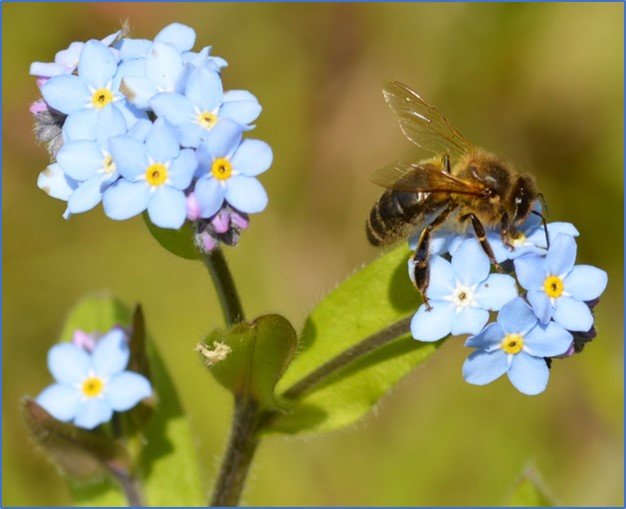Foraging on Snowdrops after Surviving the Beast from the East
Great to see all colonies survived the “beast from the east” and were out foraging again on the snowdrops. It was 8 Degree C, with sunny spells in the apiary today, here in rural Northumberland. The winter bees are collecting pollen again after breaking their tight cluster of last week.
Snowdrop Pollen Collection
The weather was perfect for some nice photographs of the foraging bees collecting pollen. The snowdrops, despite being covered in deep snow last week, have also survived. The snowdrops come out in carpets nearby and it did not take long for workers to visit the flowers. It was interesting to see the heads of the snowdrops hang down and the foraging bees fly under the flower and flip themselves up to collect the pollen and press it into their pollen baskets on their rear legs.
Bees could be seen with bright orange beads of pollen on their rear legs, back at the hive entrances. Many of the beads of pollen were much larger than they were collecting before the cold spell.
Making up a snowdrop pollen microscope slide
The last stage was to take one of the flower heads home to make up a pollen slide. I used the approach I learnt on the NDB Microscopy short Course. This involved cutting a small piece of fuchsin stained glycerin gel, picking it up on a needle tool and dabbing it onto the anthers of the flower. The piece of gel was put on a microscope slide and a cover slip was placed on top of it. The slide was then put on a warming plate until the gel melted. Some clear nail varnish was then run around the end of the cover slip.

Under my compound microscope, I could see the pollen grains were all around 28 micros from end to end of the oval/boat shape grain. Each of them showed a furrow type pore on the top surface, which was smooth. The photograph above was taken on my small camera that fits into the eye piece of my microscope. The fatty oily substance that shows on the photo as yellow is familiar from looking a dandelion pollen. I also did a quick check in Rex Sawyer’s Pollen Identification guide to check against his reference information, which is always reassuring and a great place to find out the botanical names, which for snowdrops is Galanthus nivalis.
Ready for the Spring build up
The next steps will be to keep on standby with emergency feeding, as the colony starts to grow and consume stores. I will also be looking to stimulate them with weak sugar syrup during the month, to try and get them ready for the autumn sown oil seed rape nearby.









An excellent blog, great photos and good information. Your journey from beginner to Master beekeeper gives us all something to aspire to.
I haven’t seen any of my bees since the snow so I hope they have survived, there was a fair bit of activity a few weeks ago when we had some sunny days..
Thanks for the feedback and for subscribing too!
Hope your bees have survived the beast. Regards